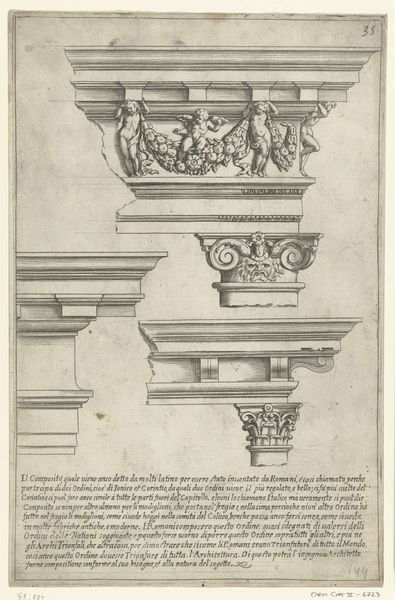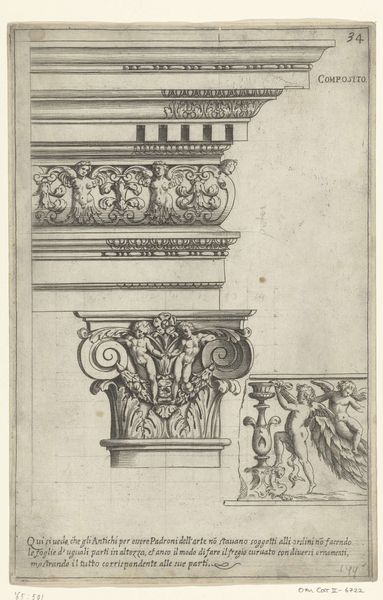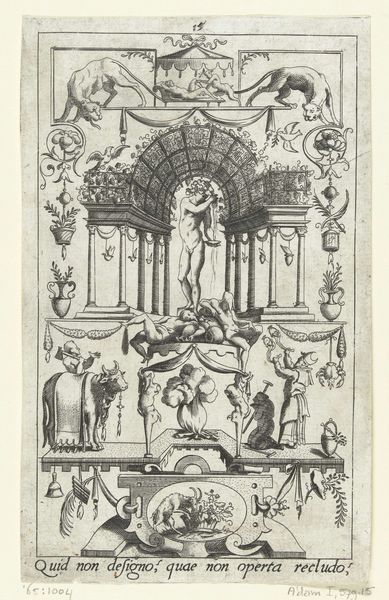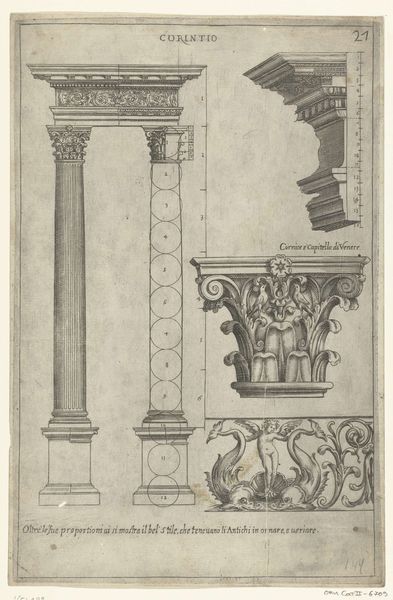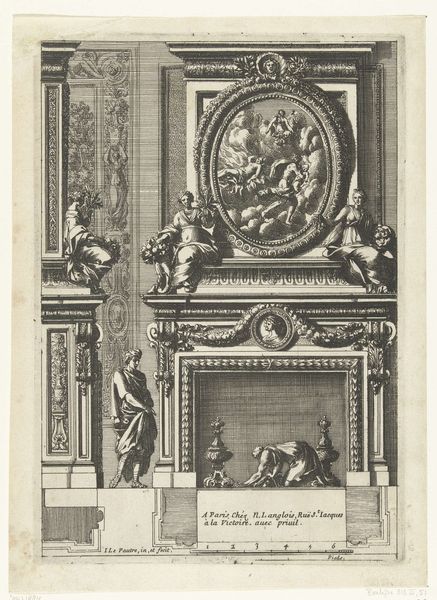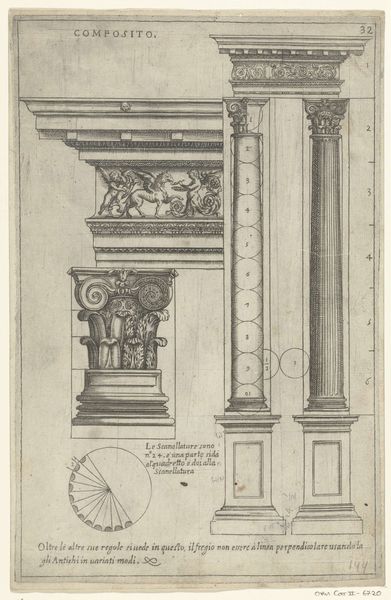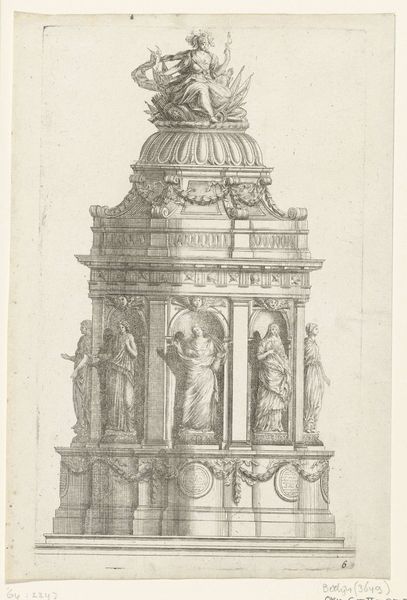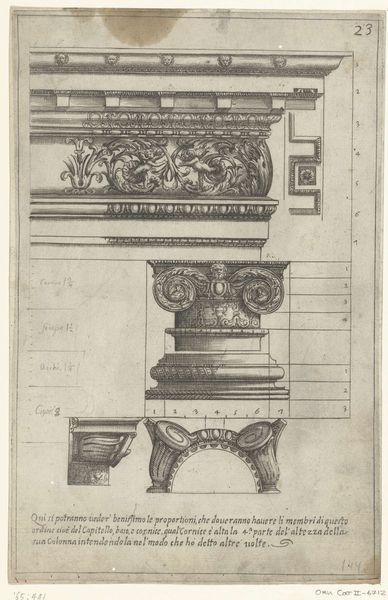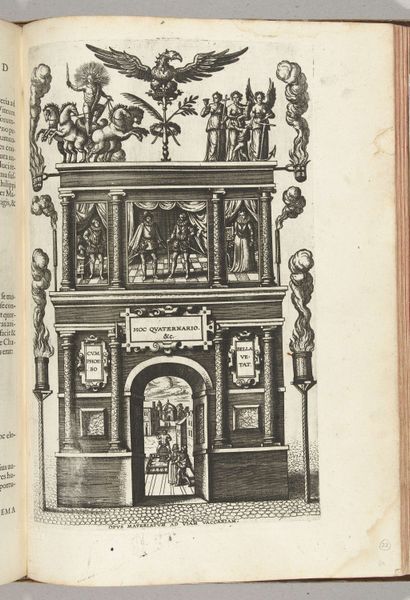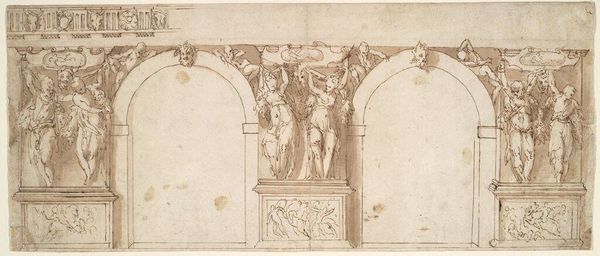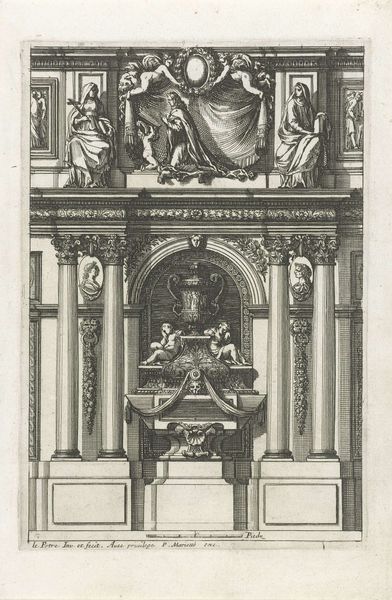
print, engraving, architecture
#
baroque
# print
#
classical-realism
#
form
#
geometric
#
line
#
engraving
#
architecture
Dimensions: height 277 mm, width 179 mm
Copyright: Rijks Museum: Open Domain
This print, whose artist is unknown, shows us details of a composite basement and capital. Created without a known date, it resides in the Rijksmuseum collection. The image reflects the Renaissance interest in classical architecture. It revives and reimagines classical forms. The composite order itself symbolizes a kind of union, mixing elements of the Ionic and Corinthian styles. This fusion speaks to the Renaissance era's embrace of complexity. It is indicative of a desire to synthesize diverse cultural and intellectual traditions. The cherubs and scenes of sacrifice woven into the design evoke the intersection of pagan and Christian worlds. This reflects the period's negotiation of faith and reason. There's a tension in this image between structure and ornamentation. It invites us to consider how power and beauty are intertwined in the built environment. How do these classical forms serve to reinforce societal hierarchies? How do they offer a sense of cultural identity and continuity?
Comments
No comments
Be the first to comment and join the conversation on the ultimate creative platform.
